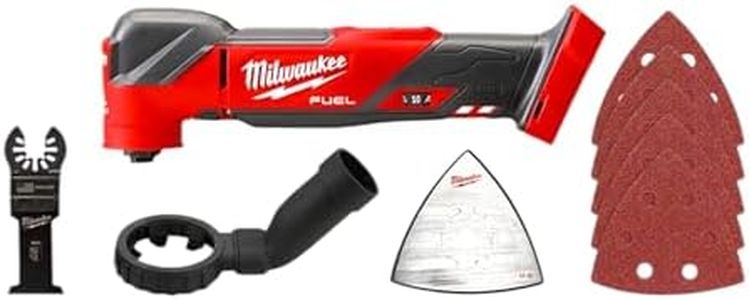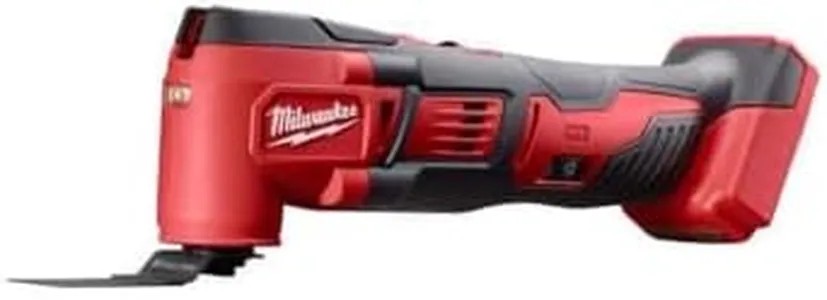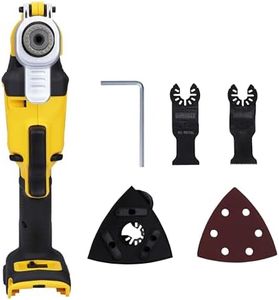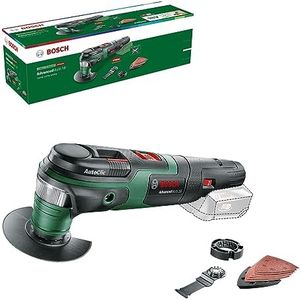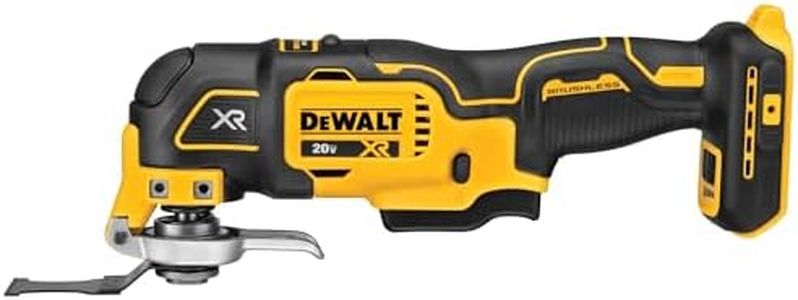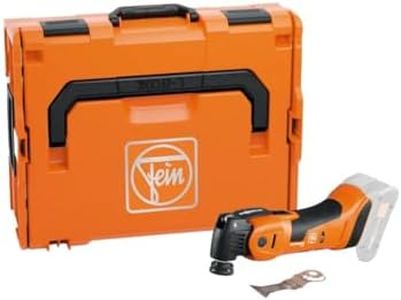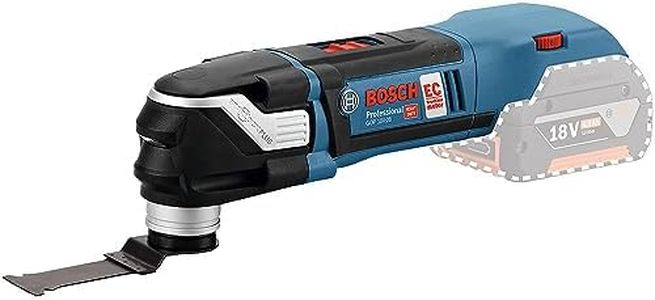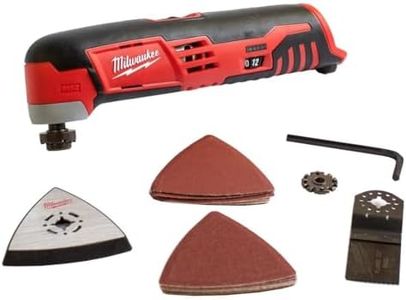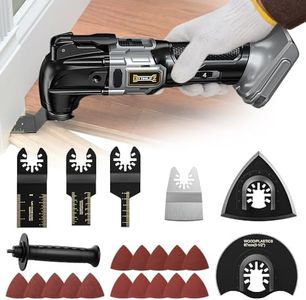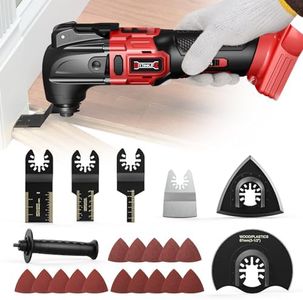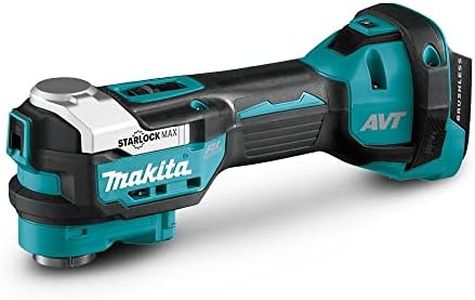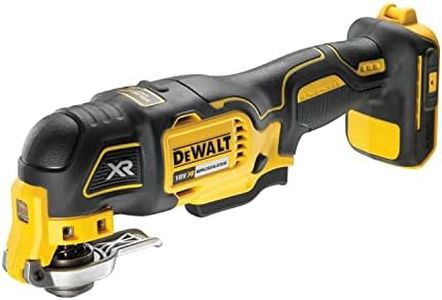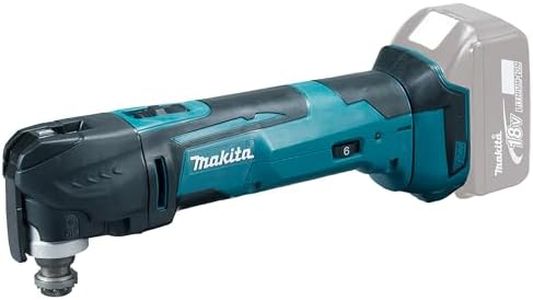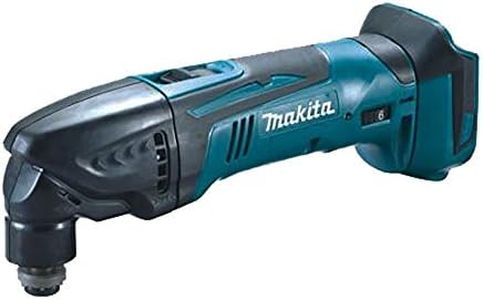We Use CookiesWe use cookies to enhance the security, performance,
functionality and for analytical and promotional activities. By continuing to browse this site you
are agreeing to our privacy policy
10 Best Cordless Multi Tool
From leading brands and best sellers available on the web.Buying Guide for the Best Cordless Multi Tool
Choosing the right cordless multi-tool can make home improvement, DIY tasks, and repairs much easier and more satisfying. These tools are versatile because they can cut, sand, grind, and more, thanks to a wide range of attachments. When selecting a cordless multi-tool, think about how and where you plan to use it, which features matter for your projects, and what feels comfortable and safe in your hands. Taking a closer look at the key specifications will help you narrow down the choices and find the best fit for your needs.Battery VoltageBattery voltage measures the strength and power of your cordless multi-tool. Higher voltage means more power to tackle tough jobs like cutting through metal or thick wood. Typically, you'll find options ranging from 10 to 20 volts. Lower voltage models (10-12V) are light, compact, and ideal for light-duty work or delicate tasks. Mid-range (14-18V) suits most homeowners for a mix of small renovations, repairs, or crafting. Higher voltage (20V) tools are powerful, recommended for frequent, heavy-duty use. Consider what tasks you most often expect to perform, and choose a voltage that matches your work style and need for portability versus power.
Oscillation SpeedOscillation speed, measured in oscillations per minute (OPM), tells you how quickly the tool's head moves back and forth. A higher speed means faster cutting and sanding, but sometimes more control is needed for delicate work, so adjustable speed is important. Speeds often range from about 8,000 to 20,000 OPM. Slower speeds are ideal for sanding, scraping, or working with soft materials, while faster speeds power through harder materials or cut more quickly. Ideally, pick a model with variable speed so you can tailor the performance to each task; otherwise, match a fixed speed to the jobs you do most.
Attachment SystemThe attachment system refers to how blades and other accessories are connected to your multi-tool. There are two main styles: tool-free systems (which use levers or buttons) and those that need a wrench or hex key. Tool-free systems are much quicker and more convenient, letting you change accessories without extra tools—perfect for when projects require multiple attachments or frequent swaps. If you're likely to do a variety of tasks in one session, look for a tool-free or universal attachment system to save time and hassle.
Ergonomics and WeightErgonomics involves how comfortable the tool is to hold and use, and the weight affects how long you can work without tiring. Lightweight tools (often under 3 pounds) are easier to maneuver, especially in tight spaces or overhead. Heavier models may offer more power but can cause fatigue during long sessions. Grip shape, handle padding, and the position of controls matter too. If possible, try holding the tool in person, and think about whether you'll mainly use it for quick fixes or longer projects, so you can balance comfort and sturdiness.
Runtime and Battery CompatibilityRuntime is how long you can use the multi-tool between charges. While this depends on the battery size, the type of job also plays a role (heavier tasks drain batteries faster). Some tools offer longer-lasting batteries or come with a spare. Check whether the battery is interchangeable with other tools—many brands use the same battery type across their tool lines, which is handy if you already own compatible tools. If you anticipate lengthy tasks or want less interruption, prioritize runtime or models that offer battery compatibility with your other cordless tools.
Included AccessoriesMany cordless multi-tools come with a selection of attachments and accessories—like cutting blades, sanding pads, and scraper heads. The quality and variety of these included items can make a big difference when you're just getting started. A basic kit is fine for general use, but if you have specific projects in mind (like grout removal or plunge cuts), check that the package includes the necessary accessories, or make sure the tool can easily use widely available options.
